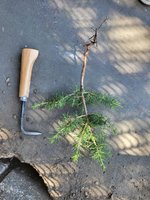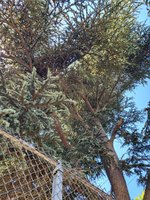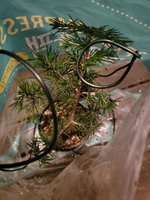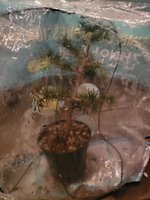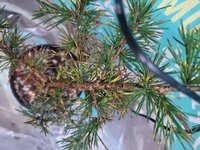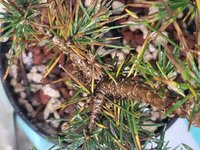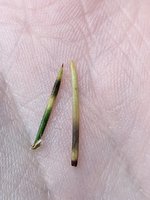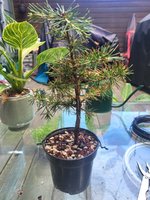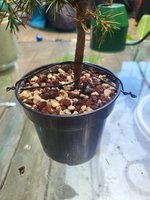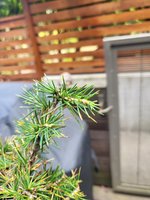pandacular
Omono
My neighborhood tennis courts are being resurfaced next week, and I had taken note of a cedar sapling that had sprouted and was thriving in one of the corners of the tennis court. After playing this morning, I decided to dig it up and try to save it (only because the courts are about to resurfaced.)
I got it out with quite a long length of the tap root. There's not much in the way of finer roots, but I'm hoping it can survive in spite of that.
My main questions are what sort of soil can I use to maximize the odds of success? I've heard the method is something fast draining (like pumice) and keeping it in the shade with decent humidity is the key. Curious if I should put it in a bag, as I've seen done for softwood cuttings and some yamadori.
I don't have pumice on hand, but I do have it in a mix of perlite, diatomaceous earth, and the original, gravelly, soil it was growing in.
I got it out with quite a long length of the tap root. There's not much in the way of finer roots, but I'm hoping it can survive in spite of that.
My main questions are what sort of soil can I use to maximize the odds of success? I've heard the method is something fast draining (like pumice) and keeping it in the shade with decent humidity is the key. Curious if I should put it in a bag, as I've seen done for softwood cuttings and some yamadori.
I don't have pumice on hand, but I do have it in a mix of perlite, diatomaceous earth, and the original, gravelly, soil it was growing in.

